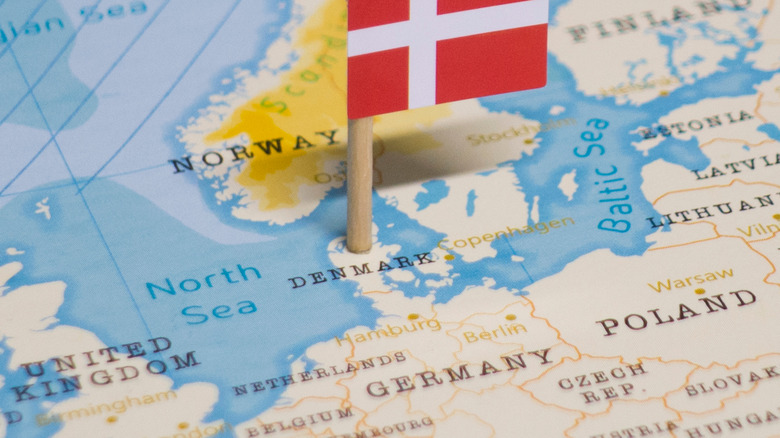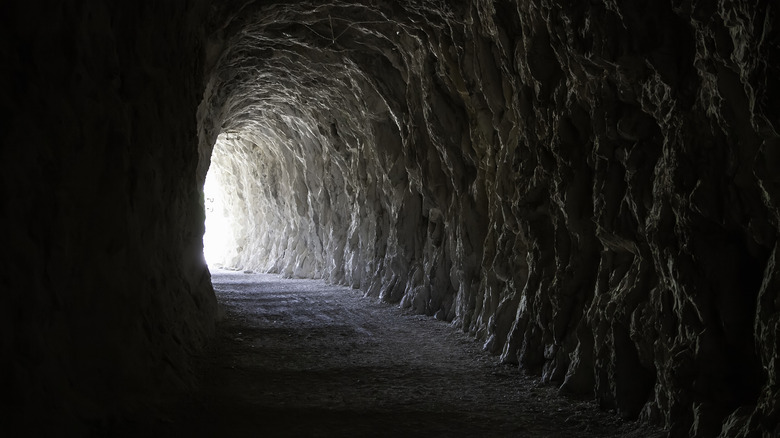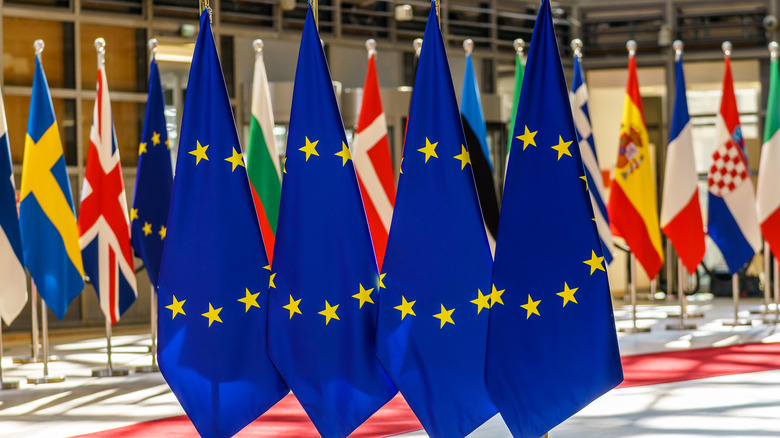What We Know About The Record-Setting Tunnel Joining Denmark And Germany
There's something irresistibly magnificent about a huge architectural project. On September 22, 2022, CNN reported that construction on the world's longest underwater commuter tunnel is underway and due to be finished in 2029. The Fehmarnbelt Fixed Link will stretch over 11 miles from the island of Fehmarn in Germany (close to several major ports and about two hours from Hamburg by car) to the Danish island of Lolland (an hour and a half from Copenhagen by car, per Google Maps). The tunnel will run at a depth of about 40 meters below the sea floor through a natural trench.
The Fehmarnbelt Fixed Link's capacity will be equally impressive. The New Civil Engineer notes that it will hold not only a four-lane highway but two rail lines as well, presumably side to side. The concrete architectural elements needed to hold this up will be massive: New Civil Engineer says they'll weigh 73,500 tons apiece. The estimated price: over $7 billion.
No easy feat
The Fehmarnbelt Fixed Link project has been in the works for over a decade. CNN notes that the project was first proposed in 2008 as a deal between the German and Danish governments. That meant two countries' parliaments and transportation bureaucracies had to work together on a single proposal, and before they could sign, geologists and other specialists had to submit studies to prove that the tunnel was feasible.
Construction also faced pressure from local and non-governmental groups. According to CNN, a series of lawsuits on behalf of ferry companies (that would lose business to the tunnel), environmentalists worried about reefs in the Baltic Sea, and three German towns tried to nip the Fixed Link in the bud. These lawsuits continued for some 12 years. It was only in 2020 that Germany's Federal Administrative Court threw them out, as CMS, the law firm representing Denmark's state-owned construction company Femern A/S, announced in a press release.
A European project
Once it's complete, the Fehmarnbelt Fixed Link will come as a relief to commuters and the transport industry in general. According to CNN, the ferry from Fehmarn to Lolland currently takes 45 minutes, not counting waiting time at either point. The train ride between the islands will only take seven minutes; by car, barring traffic, the trip should take 10 minutes.
But this massive project is more than just a transportation convenience — it's a symbol of European unity and interconnectedness. The contractors working on the project, as listed by the New Civil Engineer, include German, Danish, Belgian, French, and Dutch firms. The Transfrontier Operational Mission (MOT), a French government association, calls the Danish-German border "an example of good cooperation" between European neighbors — neighbors who once went to war over where that border should lie. In 2021, the German president, Frank-Walter Steinmeier, told Queen Margrethe of Denmark that the border between their countries "represents the most valuable asset that our two countries have jointly brought forth" and that it "challenges us as Europeans and human beings."
"Europe is our joint blessing," Steinmeier went on to say, "a Europe that is free and at peace, without barriers and border walls."


